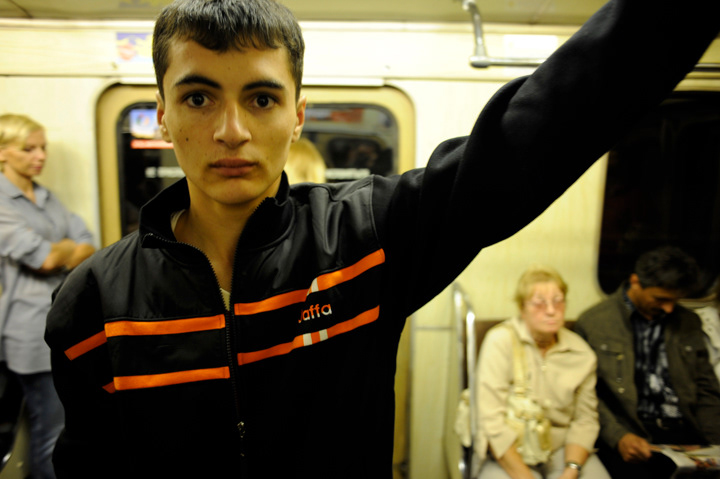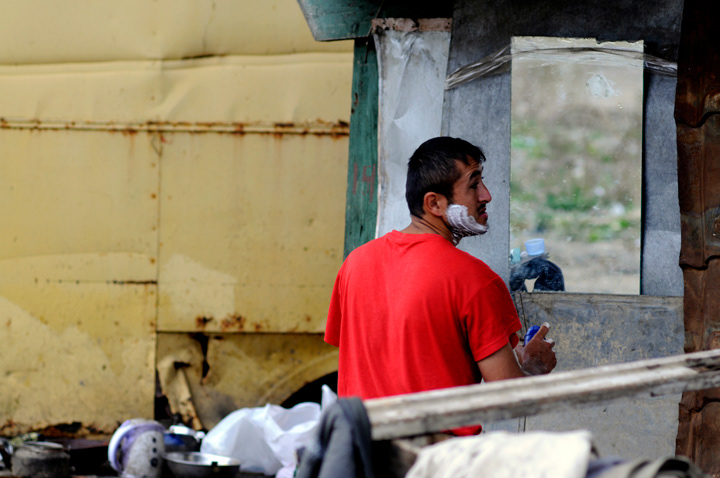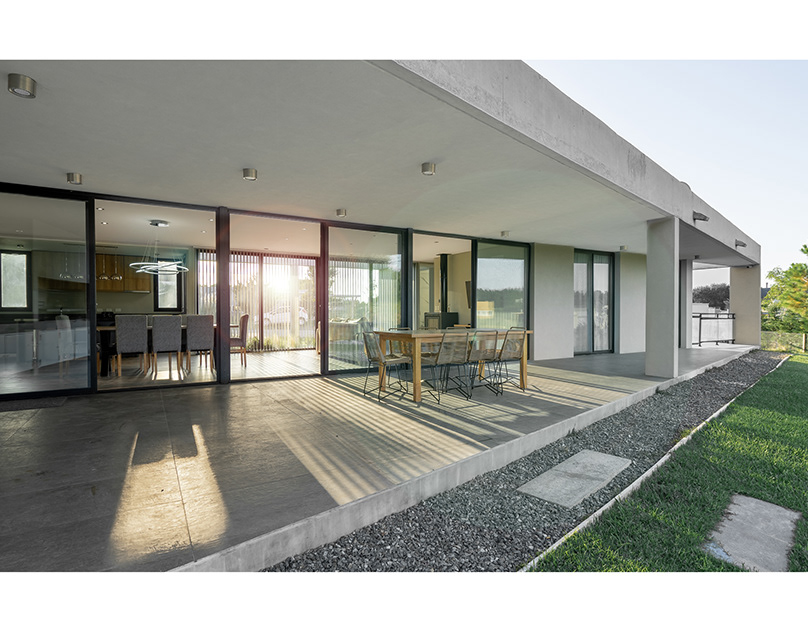They Leave for a Better Life
Each spring, 400,000 Tajiksgather in the pre-dawn darkness of the Dushanbe train station, hustling withshady ticket sellers to secure passage and board a train that has been dubbedthe "Migrant Express."
They will sleep, eat andsuffer the harassment of Uzbek and Turkmen border guards throughout a stuffy,hot and cramped four-day journey to Russia. For much of the trip, they will notbe able to leave the train, sometimes even confined to their car, so they willdepend on venders who ride the train and sell at the platforms for food, toiletpaper and other necessities.
They seek jobs inconstruction, mining, manufacturing, oil and gas fields and agriculture—higherpaying work than they can find at home—and most will go back home when theRussian winter descends. They migrate to pay for food, clothes—basic householdneeds. Others labor in Russia to pay for new houses, buy cars or refrigerators,fund education or pay off debts.
In 2009 I travelled to Moscow and Dushanbe to begin documenting the treatment Central Asian migrants face and trace theirexperiences when they arrive in Moscow: where do they find work, what are theconditions like, where do they live?
A Human Rights Watch report released in 2009 notes abuses andexploitation much of which I have already documented firsthand.
(body text contributed by Cody Kraatz)
They will sleep, eat andsuffer the harassment of Uzbek and Turkmen border guards throughout a stuffy,hot and cramped four-day journey to Russia. For much of the trip, they will notbe able to leave the train, sometimes even confined to their car, so they willdepend on venders who ride the train and sell at the platforms for food, toiletpaper and other necessities.
They seek jobs inconstruction, mining, manufacturing, oil and gas fields and agriculture—higherpaying work than they can find at home—and most will go back home when theRussian winter descends. They migrate to pay for food, clothes—basic householdneeds. Others labor in Russia to pay for new houses, buy cars or refrigerators,fund education or pay off debts.
In 2009 I travelled to Moscow and Dushanbe to begin documenting the treatment Central Asian migrants face and trace theirexperiences when they arrive in Moscow: where do they find work, what are theconditions like, where do they live?
A Human Rights Watch report released in 2009 notes abuses andexploitation much of which I have already documented firsthand.
(body text contributed by Cody Kraatz)

Seventeen-year-old Hussein rides the Moscow Metro back to his uncle's apartment on the outskirts of the city. Officials in the children’s hospital detained Hussein because he didn't have all the proper documents to be in Russia legally as an underage migrant.

A group of migrants from Tajikistan and Uzbekistan gather outside the makeshift dwellings where they squat on a piece of land in the Mytishchi area of northeast Moscow. About 6,000 people live on this land in homes ranging from shipping containers to buildings made of scrap wood.

Zarina, an Uzbek migrant, sits on her bed in Mytishchi. She holds a degree in Russian Literature and Culture from a Moscow university that is no longer recognized by the Uzbek government. She works as a domestic servant, when she can find work.

Scrap metal and wood shacks house roughly 6,000 migrant workers on the fringe of Moscow.

Central Asian migrants gather outside their homes in Mytishchi after work to prepare dinner and talk.

A near daily occurrence, migrants are stopped by police and asked to show their papers. Here two officers have driven into the fields that make up the Mytishchi squatters community to check the legal status of the families living there. Bakhram, right with coat, is an Uzbek who has gained asylum and citizenship in Russia and advocates for the migrants in such situations.

Zarina, an Uzbek migrant, returns from shopping.

A migrant laborer shaves outdoors. The shacks that they live in do not have bathrooms and things like shaving must be done outside.

A migrant worker, in the Mytishchi workers camp, shows his bandaged head, bleeding from a wound he said he sustained while trying to collect back wages. It is common for workers in the construction trades to work for many months without pay only to be told that there is no more money to pay them.

A migrant worker's hands in Moscow tell the tale of a life of hard labor.

These three workers never got paid for the 200-plus balconies they built on an apartment building in Moscow. For their efforts they said they received a beating from their employer's thugs when they attempted to collect their back wages.

A feast is spread out in traditional Tajik fashion in Umar's apartment for Eid ul-Fit, the end of Ramadan. The tradition is to receive guests for three days after the end of Ramadan.

Umar pours tea for his guests on Eid ul-Fit. Islam is a large part of the cultural lives of many of the migrants from Central Asia working in Moscow.

Umar's family in Dushanbe, Tajikistan. Although Umar has been in Russia for many years he rarely sends money back to his family and as a result both of his sons, aged 13 and 16, have been forced to work in order to support the family.

Umar's mother with her grandson in the foreground. It is common for households in Tajikistan to consist of grandparents as well as several brothers’ families living together in several buildings.

Abudovud (center) Umar's thirteen-year-old son, looks at family pictures with his cousin. Abudovud works in a bakery from 7 p.m. to 5 a.m. every day. He attends classes two days per week from 7 a.m. until noon under an arrangement with the school's principal and his teacher.

Saadi stands on the porch of his home in Dushanbe, Tajikistan. Four of his sons have traveled and worked in Moscow and sent funds back so the family could add on to the sprawling compound that was originally bought when Saadi was an economics professor. Eventually each son will have a separate home in the compound for his family.

Nazre's family celebrates the return of his son from Moscow. In Islamic tradition, the women gather separately from the men and children. Here the women gather in a room that has been extensively remodeled with funds sent back from Russia. There are modern vinyl-clad windows, new wallpaper, new outlets and fixtures, European furniture and (not shown) a flat screen television.

Nazre talks with the other men at a party to celebrate the return of his son, Mahmud, in the background, from Moscow. Mahmud worked in a furniture store and was able to send back more funds than the migrants who can only find jobs in construction or other manual labor.

Ten-year-old Shamshod stands in his family's kitchen holding a picture of his parents who are both working in Russia. He lives with his sisters Mohru, 17, and Maftuna, 14. All three children go to school and are looked after by their extended family of grandparents and aunts and uncles who live nearby.



